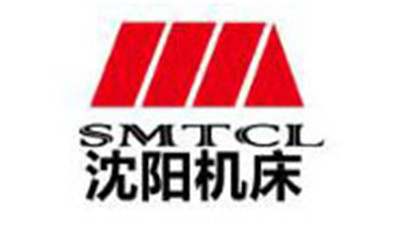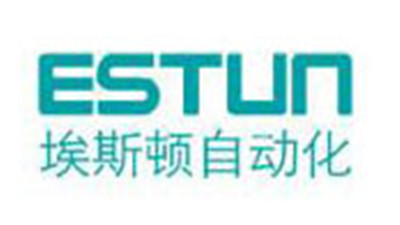How to Choose the Right Substation Transformer for Your Energy Needs Based on Load Calculation
Table of Contents
- Understanding the Importance of Load Calculations for Transformer Selection
- Key Factors to Consider When Choosing a Substation Transformer
- Comparing Transformer Types Based on Efficiency and Capacity
- Calculating Future Energy Needs: Anticipating Load Growth
- Tips for Assessing Installation and Maintenance Requirements
- Evaluating Supplier Reliability and Support Services for Transformers
- FAQS
- Related Posts
As the demand for reliable and efficient energy solutions keeps climbing, choosing the right substation transformer becomes super important. It’s not just about keeping things running smoothly; it also impacts the overall cost-effectiveness too. Industry reports suggest that the global transformer market could hit around $60 billion by 2025, with substations playing a key role in how power is distributed and managed. Now, Dezhou Xinping Electronics Co., Ltd., has been around since 2001 and is known for making high-quality electronic transformers to meet all sorts of energy needs. With more complex energy loads and the rise of renewable energy sources, it’s more important than ever to accurately assess how much load a system will handle. Getting a good sense of these changing load patterns helps businesses boost energy efficiency, cut down on costs, and keep power delivery reliable. In this blog, I’ll walk you through the main things to think about when figuring out load demands so you can pick the perfect substation transformer for your specific needs.

Understanding the Importance of Load Calculations for Transformer Selection
When you're trying to pick the right substation transformer, understanding how to do proper load calculations is super important. Basically, you need to figure out the total electrical load that the transformer will have to handle — and that includes both the peak demands and the regular, everyday use. I mean, according to a report from the IEC, getting your load calculations just right can actually cut down on transformer failures by up to 30%. That’s pretty significant, right? If you don’t do this correctly, you risk overloading your transformer, which can lead to inefficiencies or even damage — not ideal.
On top of that, the DOE points out that if your transformer is too small or too big, you’re gonna end up wasting a lot of energy — estimates suggest around 5-10% of all energy consumed. That’s not just money down the drain; it also impacts your facility’s carbon footprint. So, making sure you do detailed load calculations isn’t just a good idea — it’s key to matching your transformer’s capacity with current needs and planning for future ones. As energy usage changes, it’s a smart move to keep reassessing this, so your setup stays efficient and lasts longer. Basically, staying on top of this stuff helps keep your energy system running smoothly and saves you headaches down the line.
Key Factors to Consider When Choosing a Substation Transformer
When you're trying to pick the right substation transformer for your energy needs, there are actually quite a few important things to keep in mind to make sure everything runs smoothly and efficiently. First off, you really gotta get a handle on the load calculation — basically, figure out how much power you’ll be using, including those peak times when energy demand is the highest. Knowing these numbers as accurately as possible helps you choose a transformer that can handle everyday use without any issues, even during those busy peak periods.
Another thing to think about is what type of transformer makes sense for your setup. Depending on your energy distribution, you might go with a liquid-filled transformer or a dry-type one. Liquid-filled options usually cool better and can handle higher capacities — great if you need a lot of power. On the flip side, dry-type transformers are often preferred in city environments since they’re a bit more eco-friendly and require less maintenance. Also, don’t forget to check the voltage rating, efficiency, and whether it meets your local electrical standards. When you take all these factors into account, you’re much more likely to pick a transformer that fits your needs perfectly and keeps your power supply running reliably without any hiccups.
Comparing Transformer Types Based on Efficiency and Capacity
When you're choosing a substation transformer, things like efficiency and capacity are really the key factors that directly affect your energy needs. There are different types of transformers out there—like oil-immersed and dry-type—and each has its own perks. For example, oil-immersed transformers usually handle high-capacity loads pretty well, making them a solid choice for bigger setups. On the other hand, dry-type transformers are often praised for being safer and easier to maintain, which makes them a good pick for city environments or spots where space is limited. To figure out what's best, it’s smart to run the load calculations—this way, you’ll pick a transformer that matches your operation's demands and keeps your energy distribution running smoothly and reliably.
By the way, Dezhou Xinping Electronics Co., Ltd. is a high-tech company that's been around since 2001. We're really passionate about making precise electronic transformers, and our focus on quality and innovation sets us apart in the industry. Our transformers are built to meet different efficiency needs, helping our clients get the most out of their energy while staying durable and high-performing. When you're weighing your options, just keep in mind the capacity you need based on your load calculations—and pick a transformer that will serve you well in the long run, offering reliable and efficient performance tailored to your specific energy requirements.
Calculating Future Energy Needs: Anticipating Load Growth
So, here's the deal—electricity needs in the U.S. are really skyrocketing lately, and it’s mostly because of cool tech like generative AI and folks driving electric cars now. Honestly, trying to predict how much power we'll need in the future is more important than ever. Experts are saying we could see an increase of up to 50% by 2050, and places like data centers are definitely playing a big part in that jump. It’s super urgent that we get a handle on this early, so our power stations can handle the extra load without risking blackouts or grid issues.

Utility companies and planners are in a busy spot right now—they need to figure out not just how much power we’re using today, but what we’ll need down the line, considering new tech stuff and changing lifestyles. One tricky part is that there might not be enough transformers to keep up with all this extra demand, which could make things worse if they can’t upgrade in time. If substations don’t keep pace, it might put our entire power grid at risk, and nobody wants that. That’s why accurate load calculations are a must. They help us keep the lights on and support a cleaner, smarter energy future that can handle how fast everything’s changing.
Tips for Assessing Installation and Maintenance Requirements
Picking out the right substation transformer isn't just about numbers; it's about thinking through installation and maintenance from the get-go. You want to make sure it’ll support your energy needs without a hitch. Start by checking out how much space you actually have on-site. It’s not just about fitting the transformer in; you need enough room around it for easy access and regular work. Also, don’t forget to consider the environment—it can really influence how well the transformer performs and how long it lasts.
When it comes to keeping everything running smoothly, it’s super important to look at the skills within your team. Regular check-ups and routine maintenance are key to stretching out the lifespan and avoiding surprise breakdowns. It’s a good idea to set up a maintenance plan based on what the manufacturer recommends, as well as what makes sense for your specific setup.
Here at Dezhou Xinping Electronics, we’re really proud of our know-how in making precise electronic transformers for all kinds of applications. Since we started back in 2001, we’ve gained loads of experience, and we love helping our clients pick the right transformer—not just one that meets their energy needs, but that’s also straightforward to install and keep in good shape over the years.

Evaluating Supplier Reliability and Support Services for Transformers
When you're out there choosing the right substation transformer, it’s really important to think about not just the quality of the equipment, but also how reliable your supplier is and what kind of support they can provide. You know, recent surveys from around the world show that almost 40% of transformer failures happen because of not enough maintenance or oversight. That’s a pretty big deal, and it really points to why you should go for suppliers who not only deliver good gear but also offer solid support services. They can help make sure routine check-ups happen on time, which really cuts down the chances of unexpected outages that cause headaches.
On top of that, power companies are starting to pay even more attention to assessing the condition of their transformers. For example, some recent evaluations of regional power grids emphasize how critical it is to keep existing assets in good shape since that’s key to keeping everything running smoothly. When support services include things like predictive maintenance and quick repairs, it really helps utilities get the most out of their transformers and keeps the grid more reliable overall. So, if you’re working with suppliers who are serious about post-installation support and tracking transformer health, you can better tailor your plans to match your energy needs and operational goals. Honestly, it’s all about working smarter and avoiding surprises down the line.
How to Choose the Right Substation Transformer for Your Energy Needs Based on Load Calculation - Evaluating Supplier Reliability and Support Services for Transformers
| Criteria | Importance Level | Supplier Rating | Support Services Offered |
|---|---|---|---|
| Transformer Efficiency | High | 4.8/5 | Regular maintenance, Remote monitoring |
| Short-Circuit Stability | High | 4.5/5 | 24/7 Emergency support |
| Temperature Rise | Medium | 4.7/5 | On-site inspections |
| Environmental Impact | Medium | 4.6/5 | Sustainability reports |
| Cost-Effectiveness | High | 4.4/5 | Flexible financing options |
FAQS
: Load calculations are essential because they ensure that the energy needs of a substation are met efficiently, helping to prevent transformer overloads and failures, potentially reducing failures by up to 30%.
Improperly sized transformers can lead to significant energy losses of about 5-10% of total energy consumed, increasing operational costs and negatively impacting a facility's carbon footprint.
Detailed load calculations align transformer capacity with current and future demands, ensuring optimal performance, managing energy consumption effectively, and extending the longevity of the transformer.
Load calculations assess both peak and base load demands and consider various factors such as advancements in technology, societal shifts, and predicted future electricity demand.
Future load growth is projected by considering technological innovations, societal shifts, and current trends in electricity demand, which is anticipated to increase significantly due to developments like generative AI and the electrification of transportation.
Utilities and planners are responsible for estimating current energy requirements and projecting future energy consumption to ensure that substations can accommodate increasing loads without jeopardizing power system reliability.
Not preparing for load growth could result in supply bottlenecks in transformers and jeopardize the reliability of power systems, ultimately affecting grid stability as electricity demands rise.
Frequent reassessments allow businesses to adapt their transformer selection to changing energy consumption patterns, optimizing their energy infrastructure for better efficiency and sustainability.



















